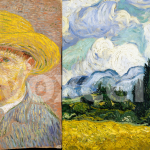Question –
WRITING TASK 1
You should spend 20 minutes on this task.
The diagrams below show the life cycle of a species of large fish called the salmon.
Summarise the information by selecting and reporting the main features, and make comparisons where relevant.
You should write at least 150 words.

Answer –
The pictures display different phases that a large fish named the salmon goes through during its lifetime.
Overall, this is a three-stage, natural, cyclical process. It starts with salmon eggs hatching beneath the reeds and culminates in the adult salmon going to the upper river to lay eggs. Moreover, the salmon spends the earlier part of its life, around four years, in freshwater, while the later part, about five years, is spent in seawater.
The process begins when adult salmon lay eggs beneath a patch of reeds, surrounded by small stones in the slow-moving upper river. These eggs hatch after about five to six months, and fries emerge from them. Then, these fries, which are three to eight centimetres long, migrate to the lower river, where currents move swiftly and spend approximately four years before they grow and transition into smolts, measuring 12 to 15 centimetres in length.
Regarding the remaining stages of the process, smolts make their way to the open sea, where they live for around five years and mature into salmon, which are 70 to 76 centimetres long. In the final stage of the process, the adult salmon swim back to the upper river to spawn under the reeds, and thus, the process begins all over again.




